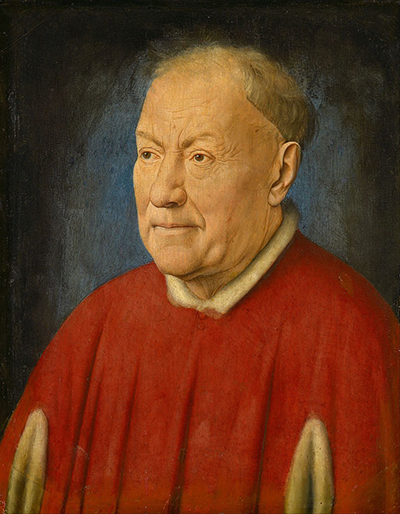Jan van Eyck's Portrait of Cardinal Niccolò Albergati was completed soon after one of his last remaining drawings, a study sketch of Cardinal Niccolò Albergati also from 1431.
Once the oils have been added in this painted version, so much more can be seen and understood about the Cardinal. Suddenly, we understand more about his clothing, it's colours, material and level of grandeur were all harder to distinguish in the original drawing. The lines across his face are also far more evident, with the fainter drawing failing to communicate quite how aged this gentleman was.
This is a relatively small painting by the standards of the Northern Renaissance, standing at around 27.5cm wide by 34cm long. In fact, it was almost precisely the same size as his earlier drawing which would have been it easier to make the transition from one artwork to the next. This significant oil portrait can now be found at the Kunsthistorisches Museum in Vienna, an Austrian city with several fine collections of traditional art (Kunsthistorisches translates loosely as fine arts, or historical paintings).
Many portraits make use of particularly simple, plain backgrounds so that the focus is not drawn away from the facial features of the subject and in this example Van Eyck darkens the wall behind in order to allow the brightness of the figure to stand out more. At first glance there is no difference between the compositions of the drawing and painting but on closer inspection we can see how the shoulders have been slightly broadened and the ears have been lengthened. Other differences may have occurred naturally from switching from one medium to the other.




